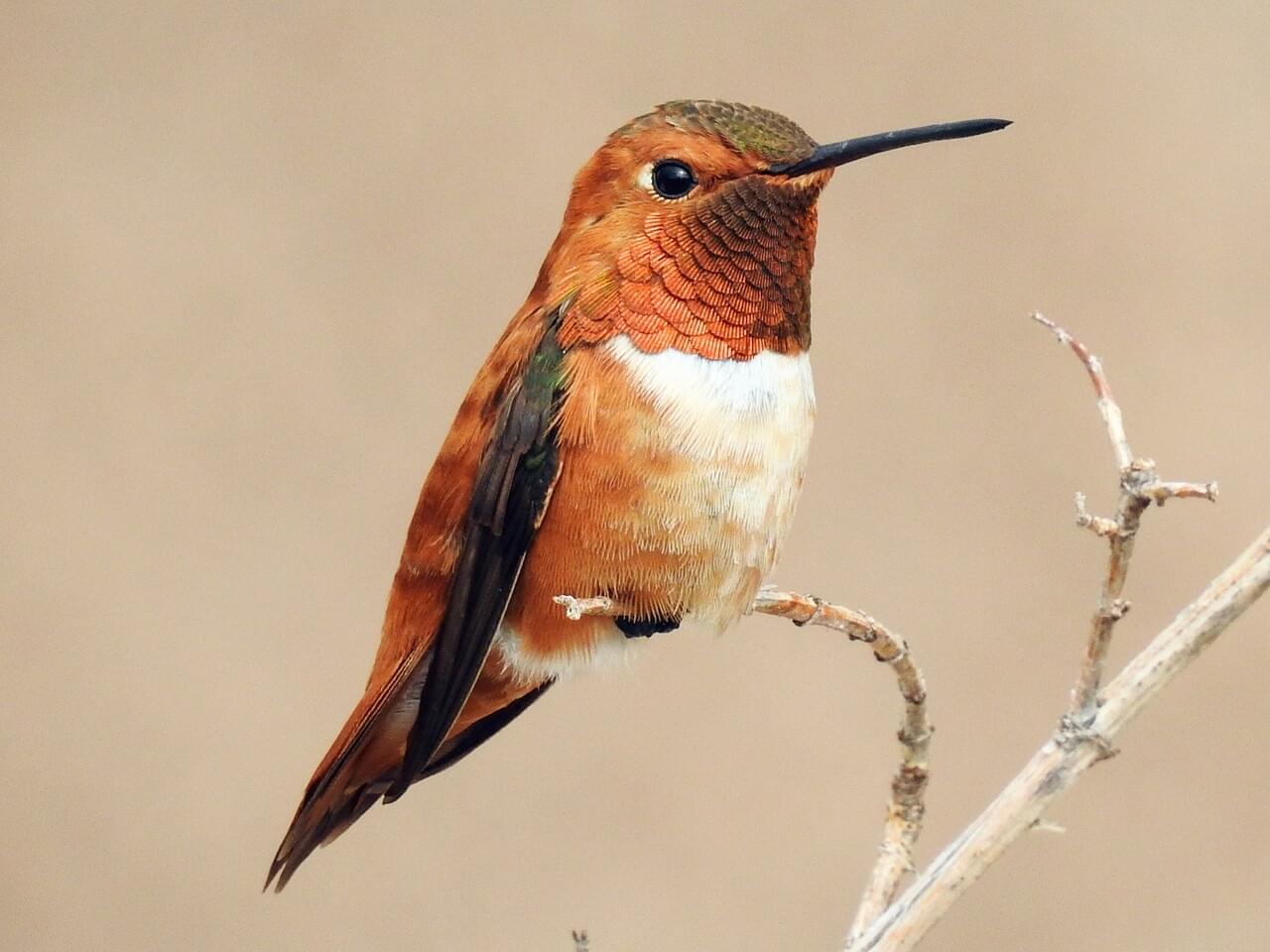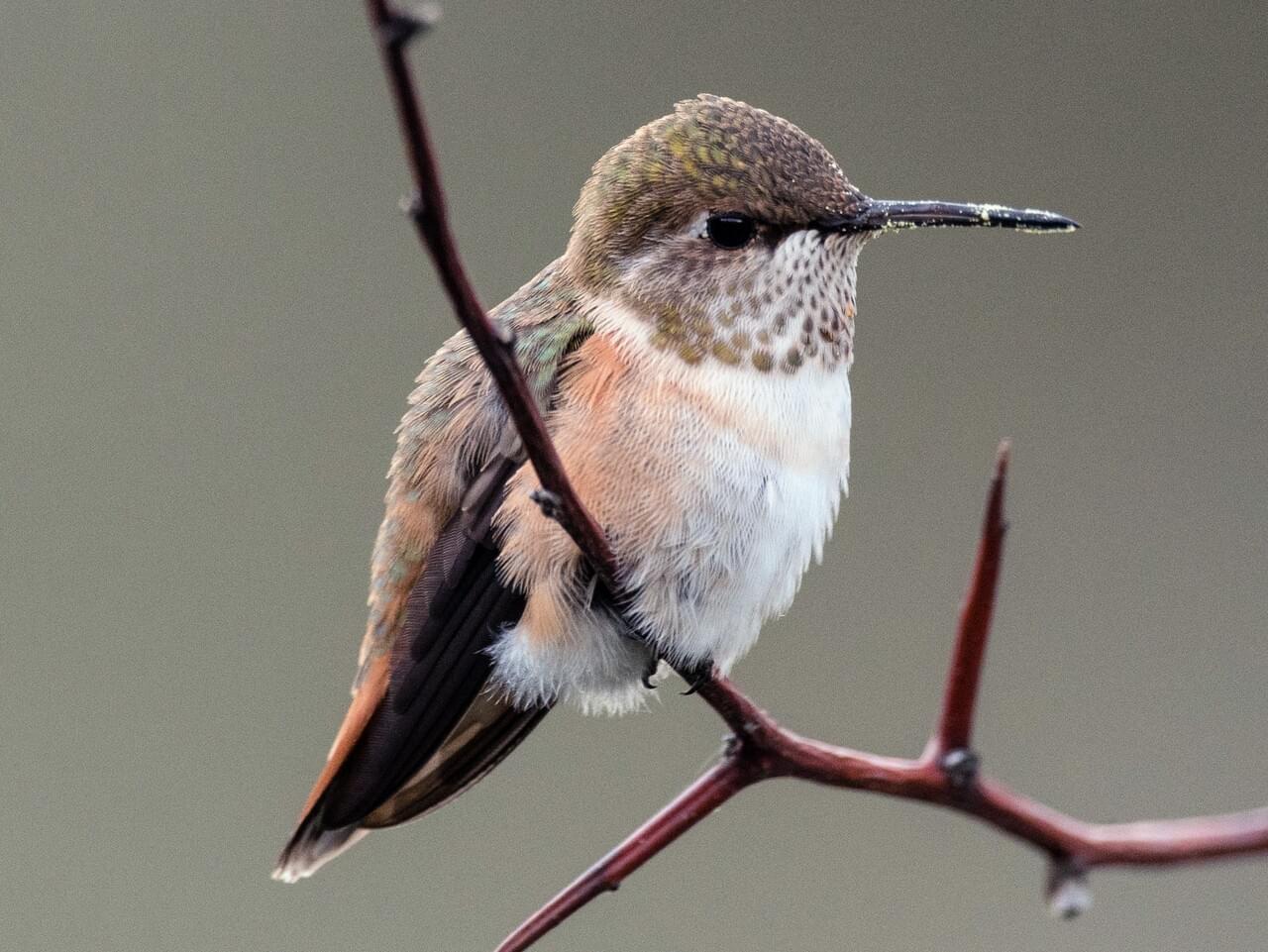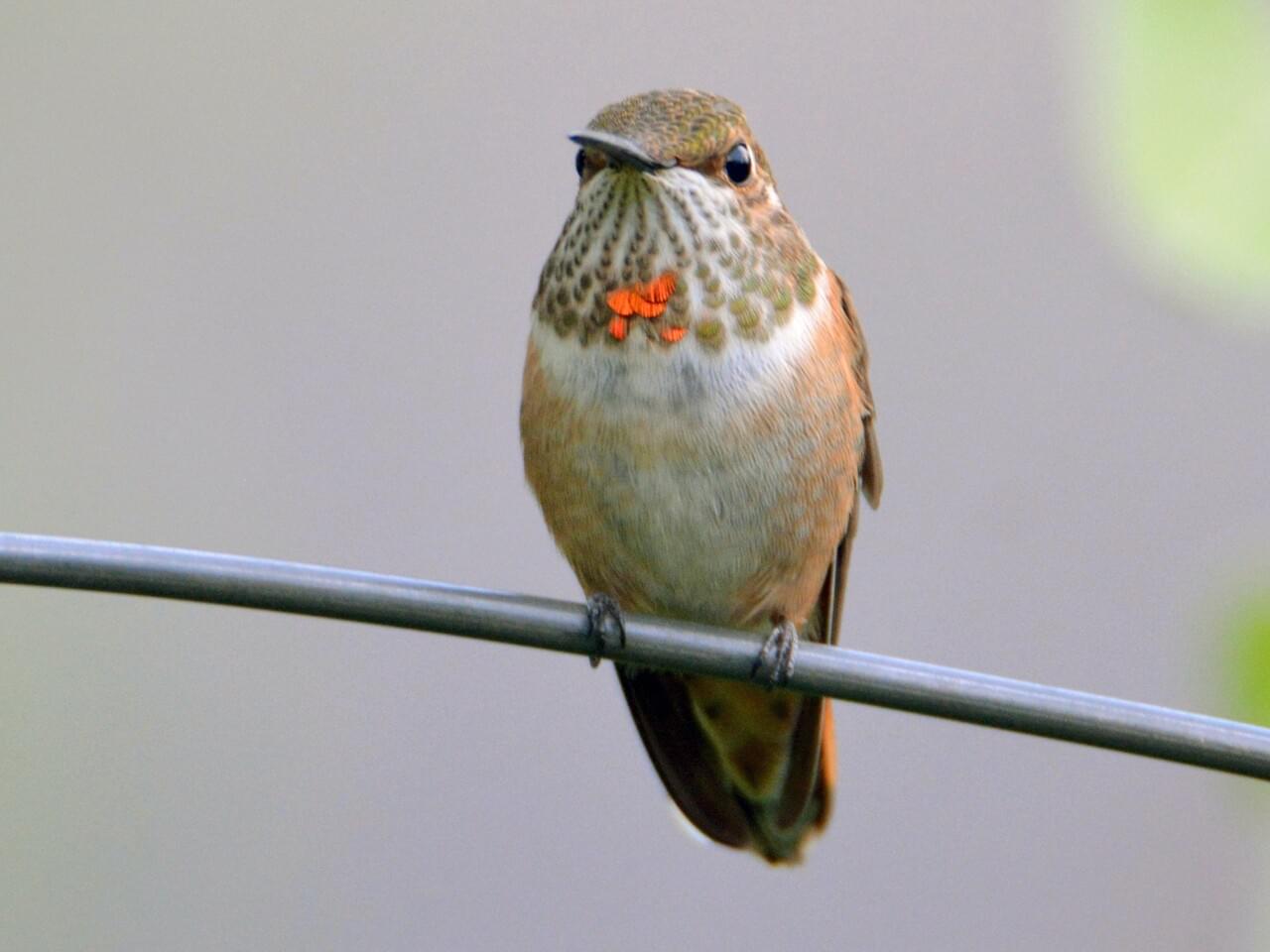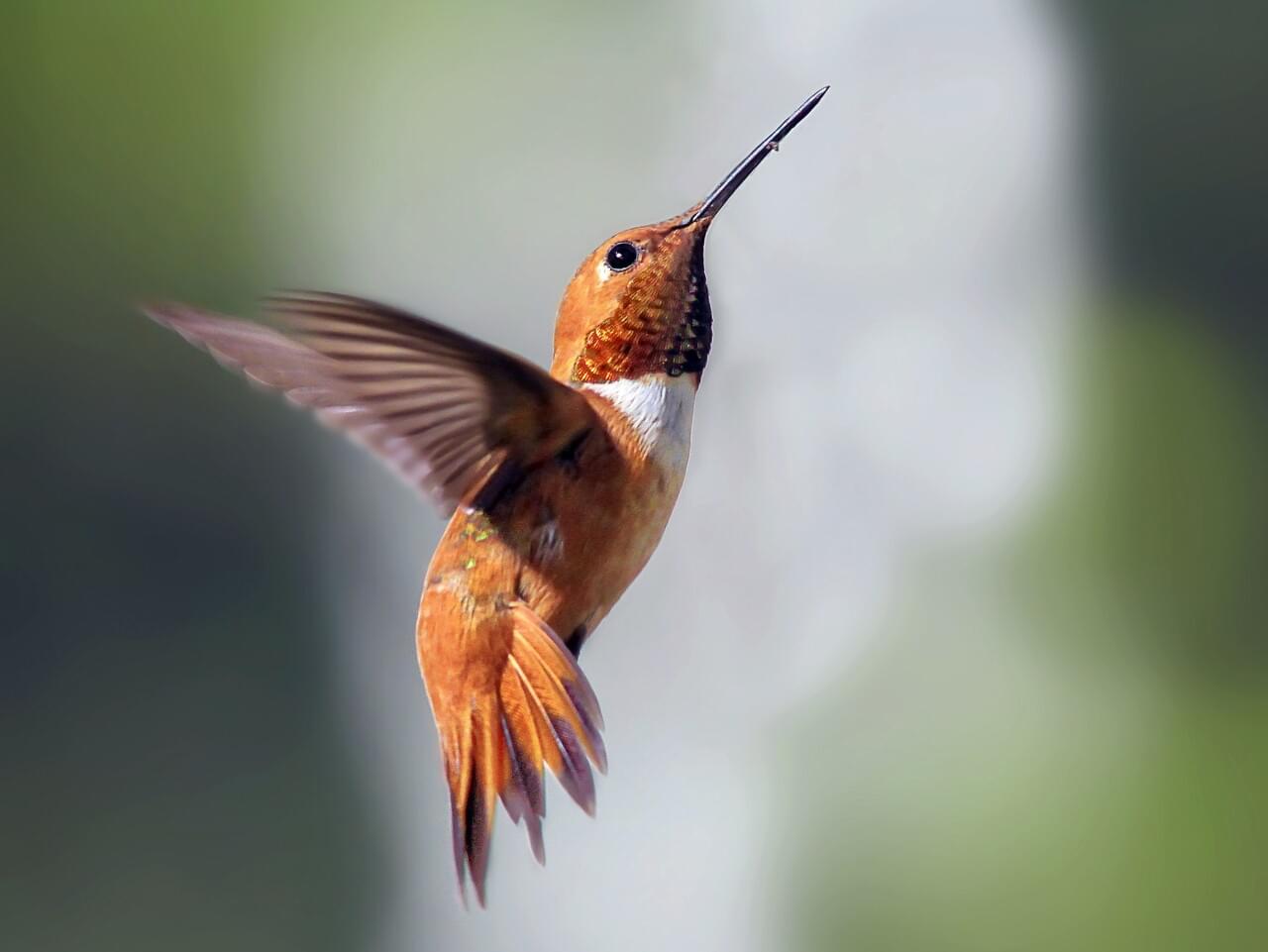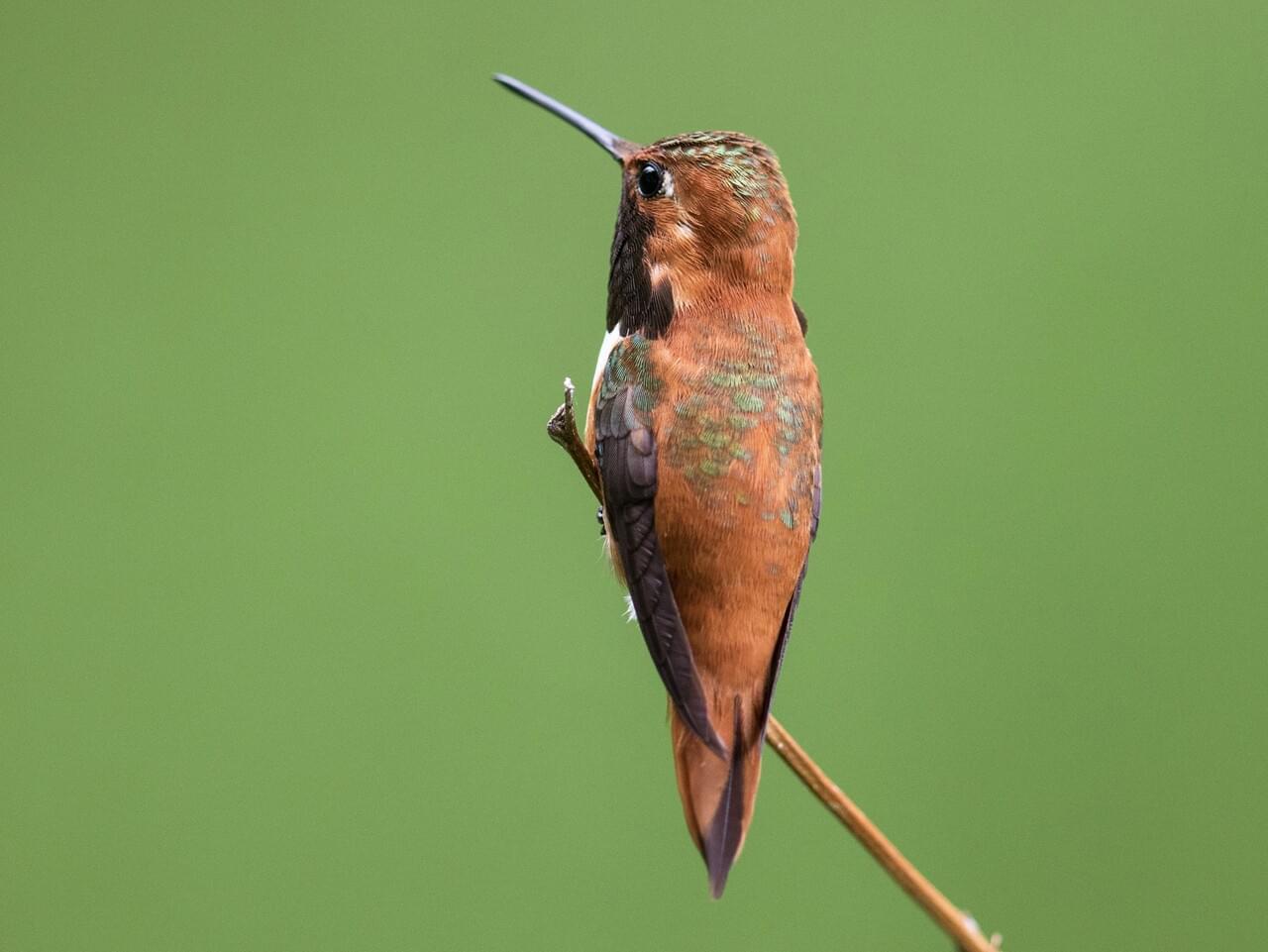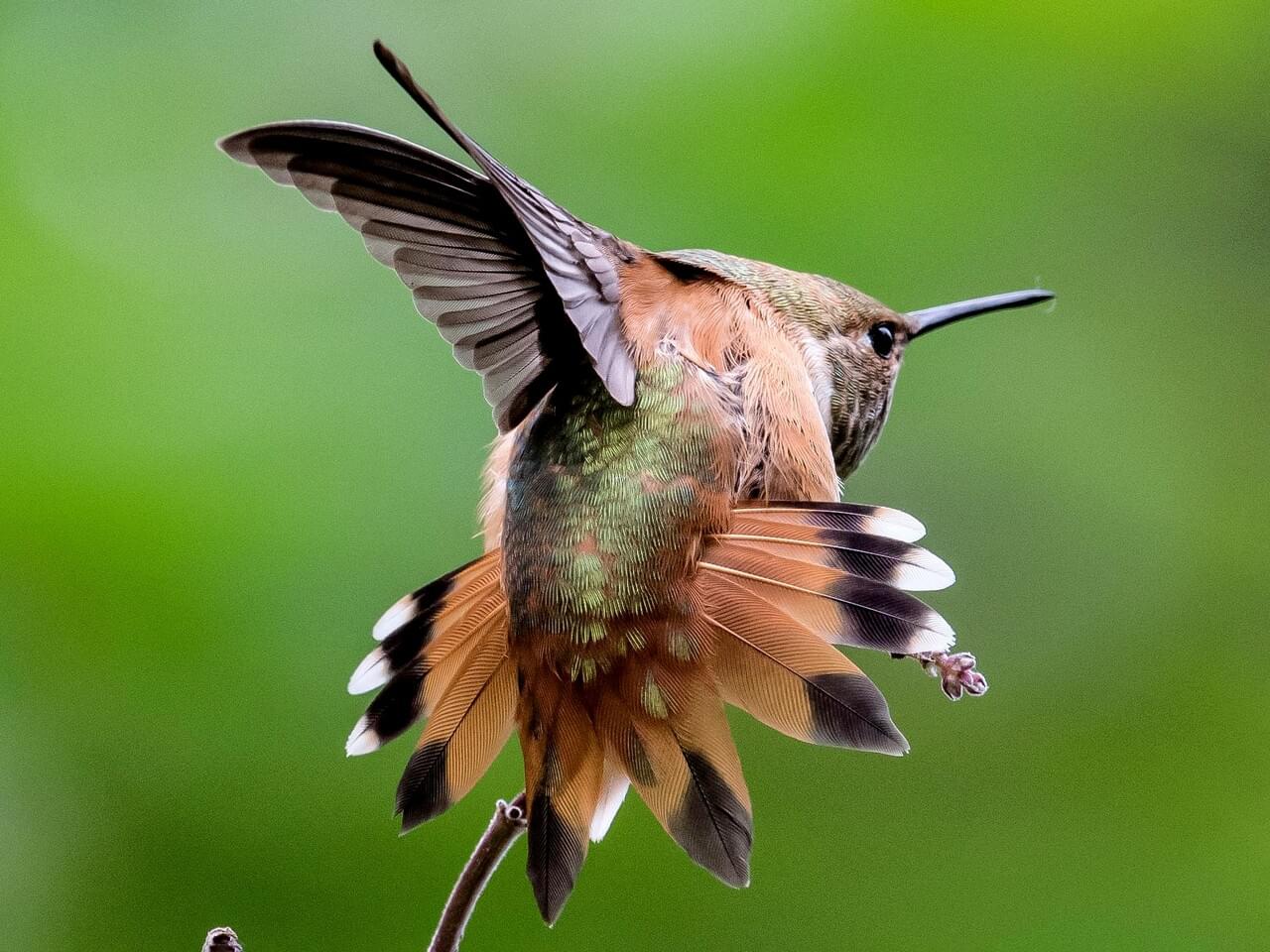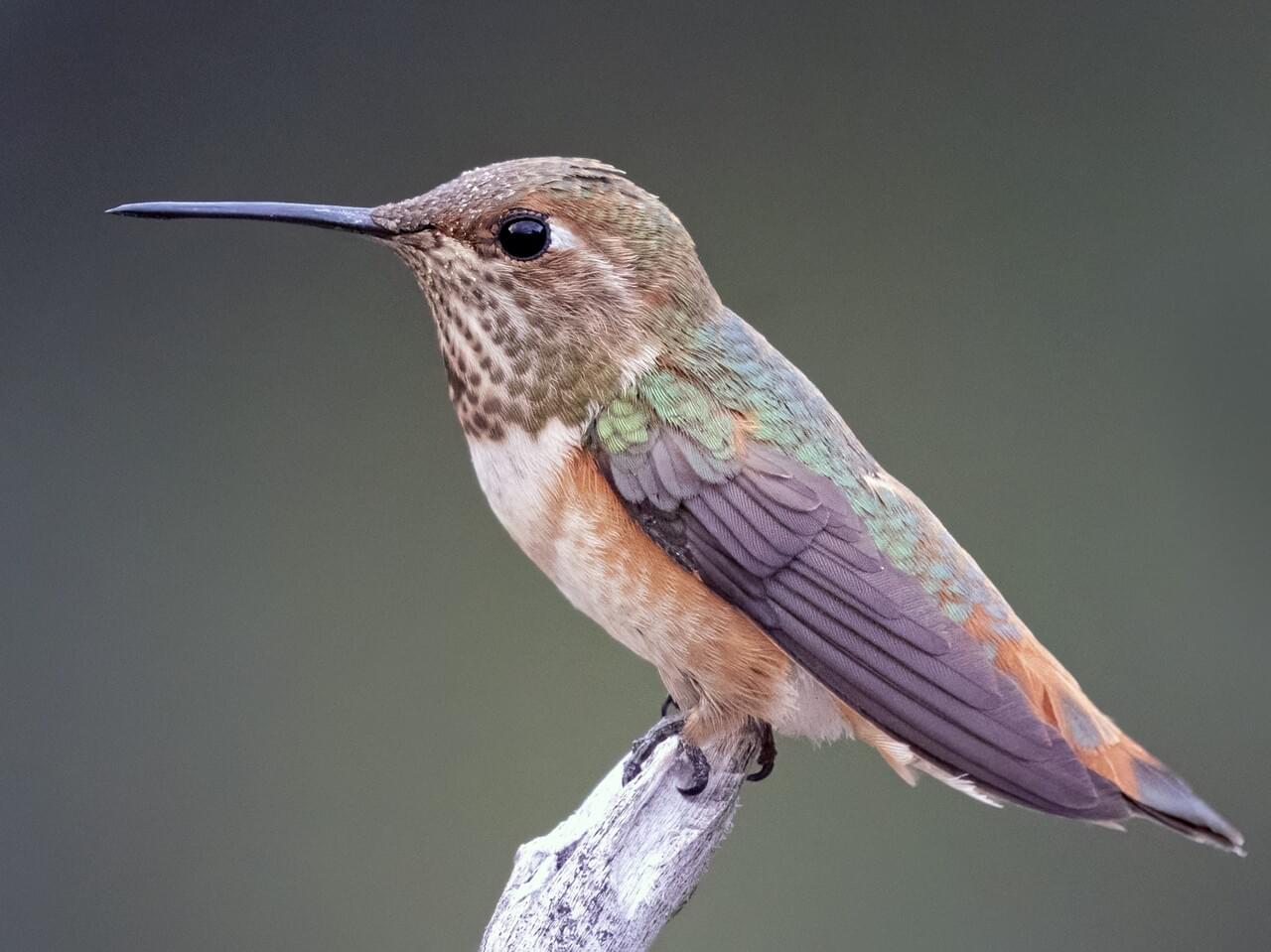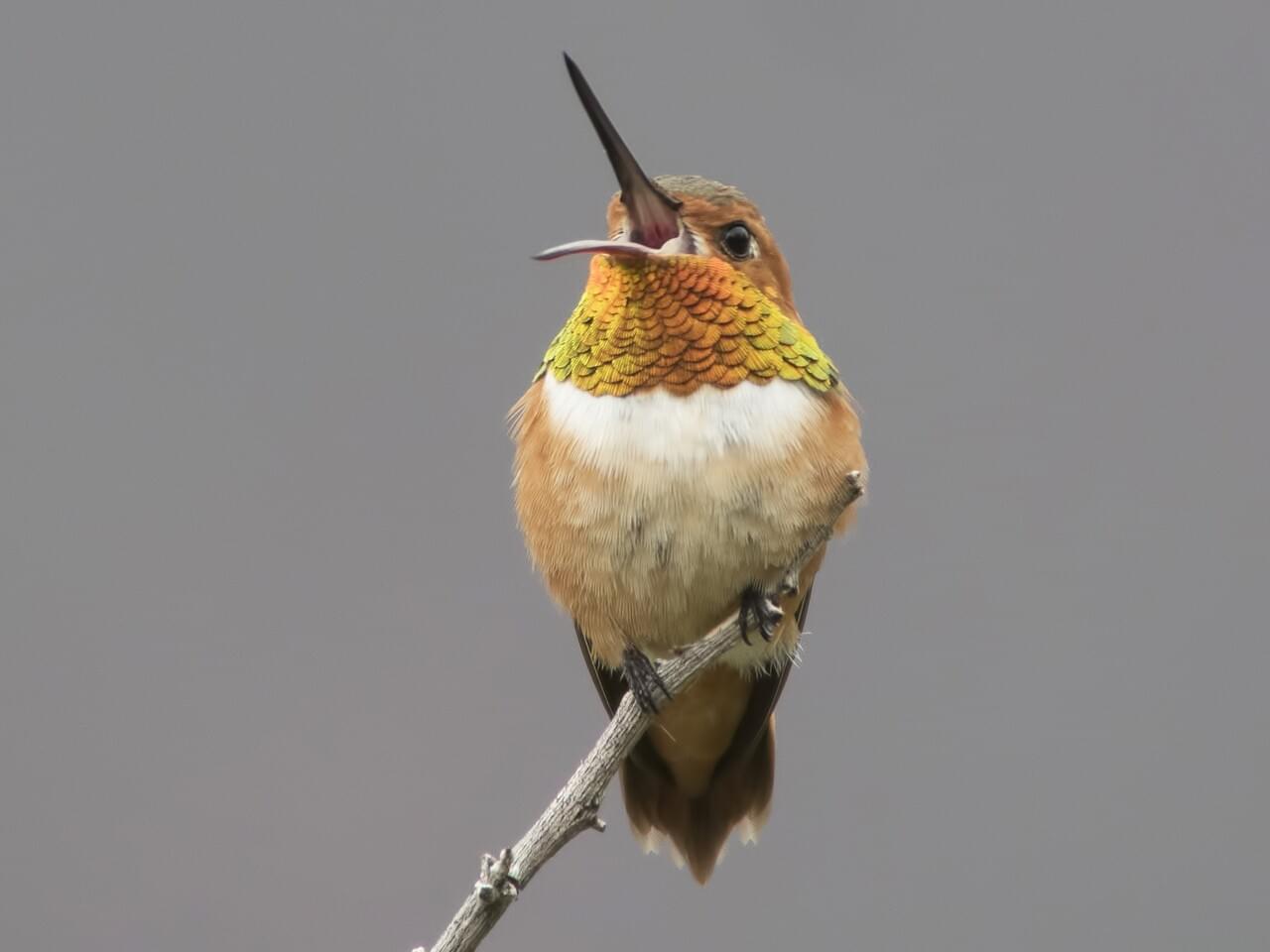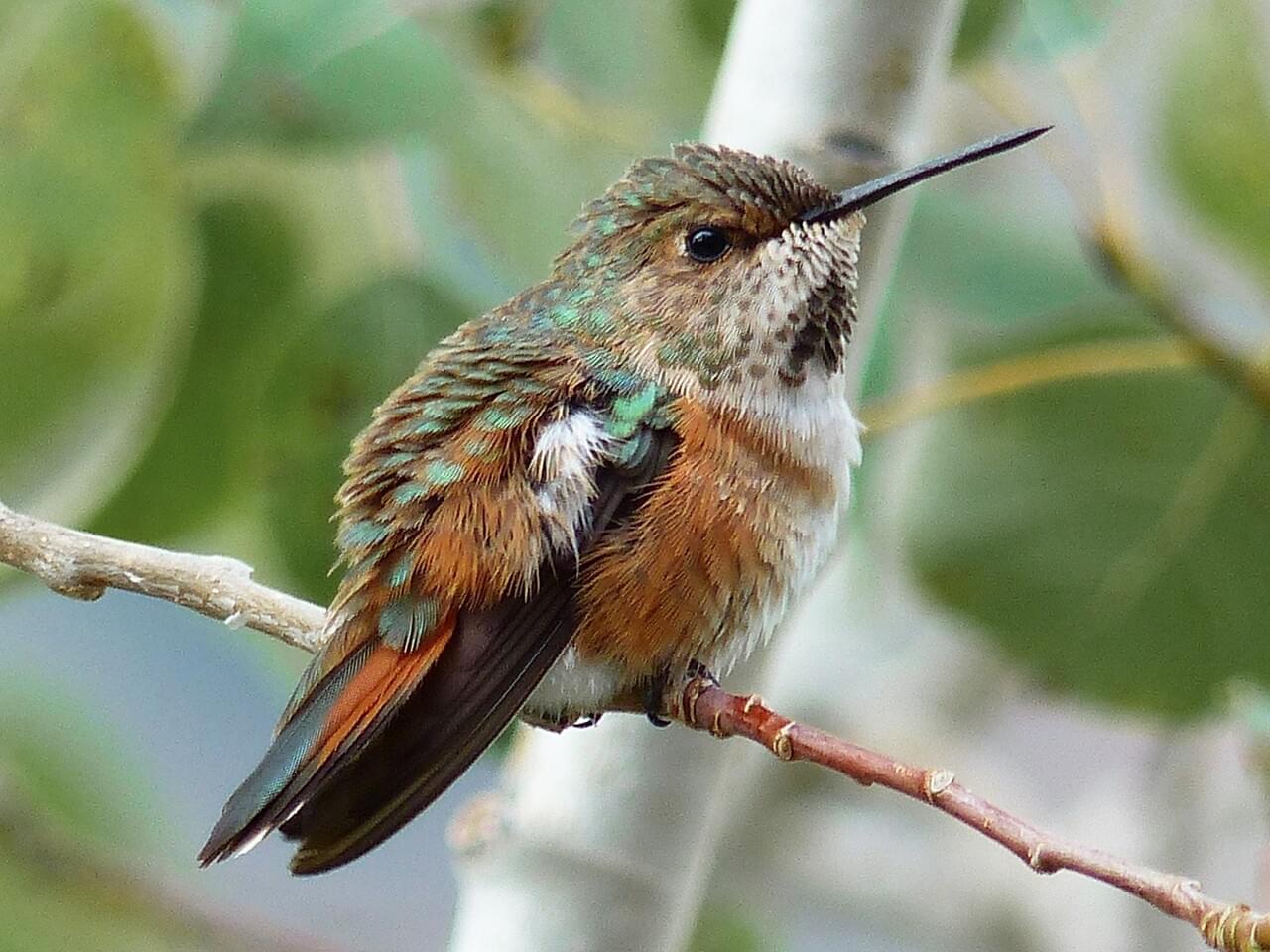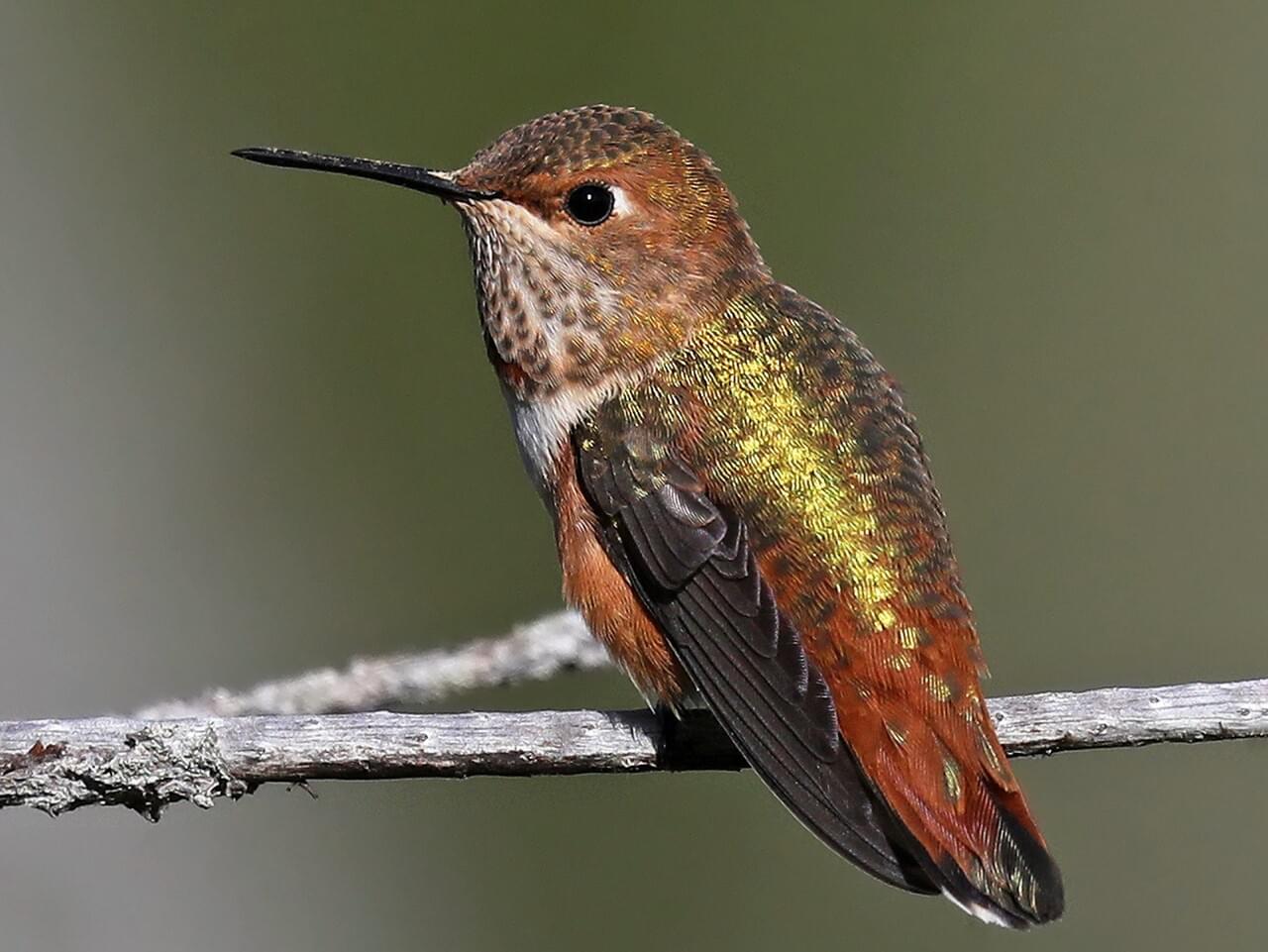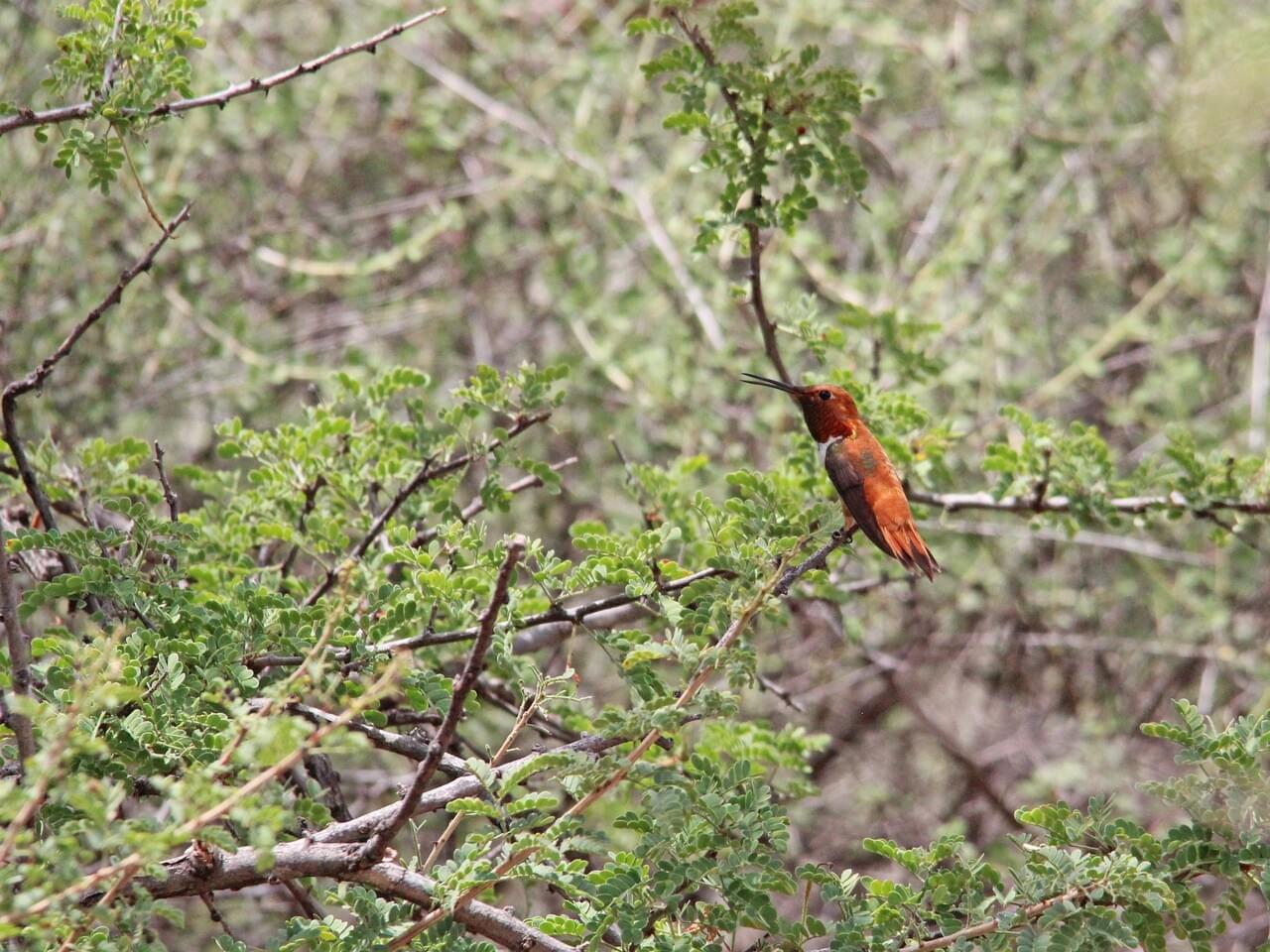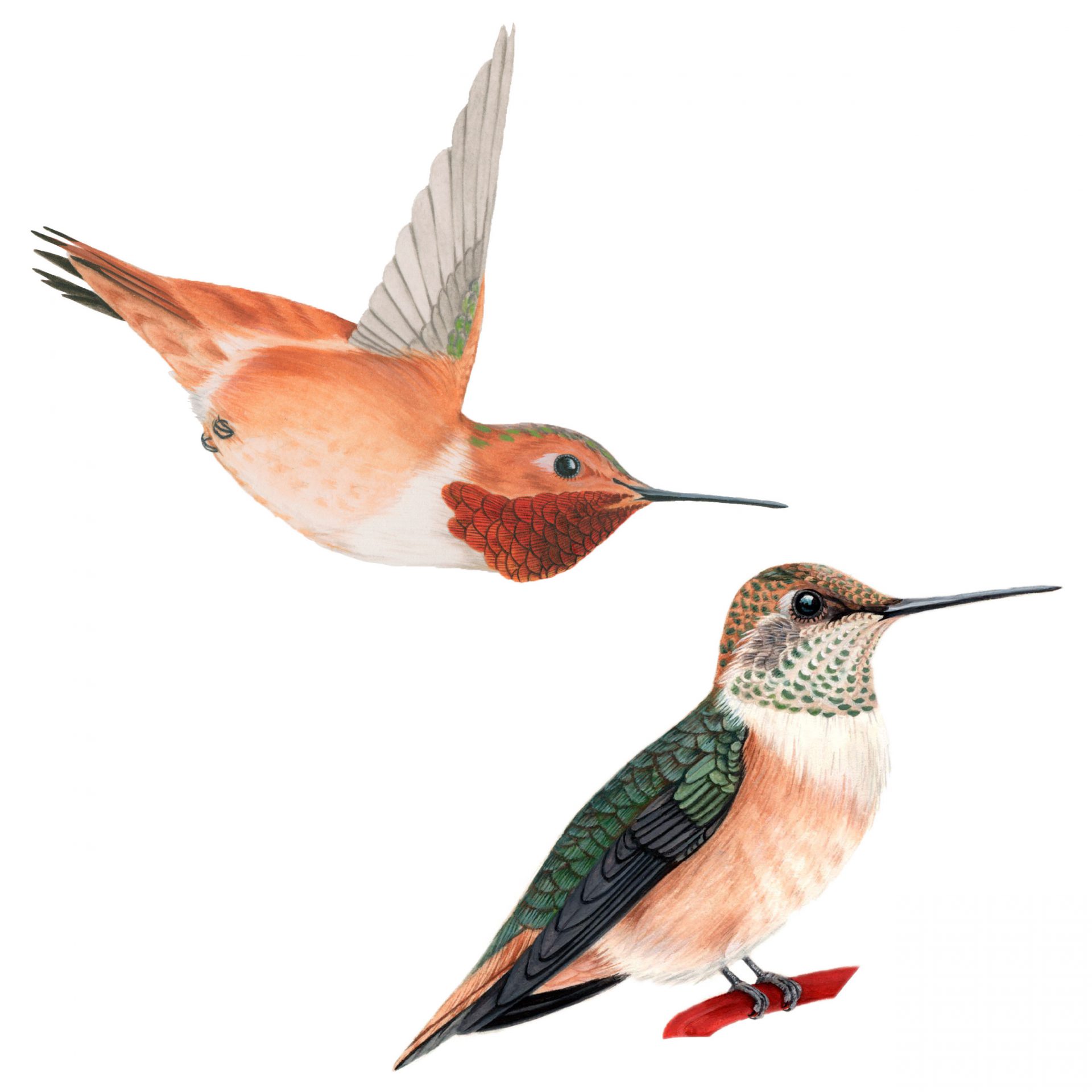 Photo ©
Liz Clayton Fuller
Photo ©
Liz Clayton Fuller
Rufous Hummingbird
One of the feistiest hummingbird in North America. The brilliant orange male and the green-and-orange female Rufous Hummingbird are relentless attackers at flowers and feeders, going after (if not always defeating) even the large hummingbirds of the Southwest, which can be double their weight. Rufous Hummingbirds are wide-ranging, and breed farther north than any other hummingbird. Look for them in spring in California, summer in the Pacific Northwest and Alaska, and fall in the Rocky Mountains as they make their annual circuit of the West.
Range
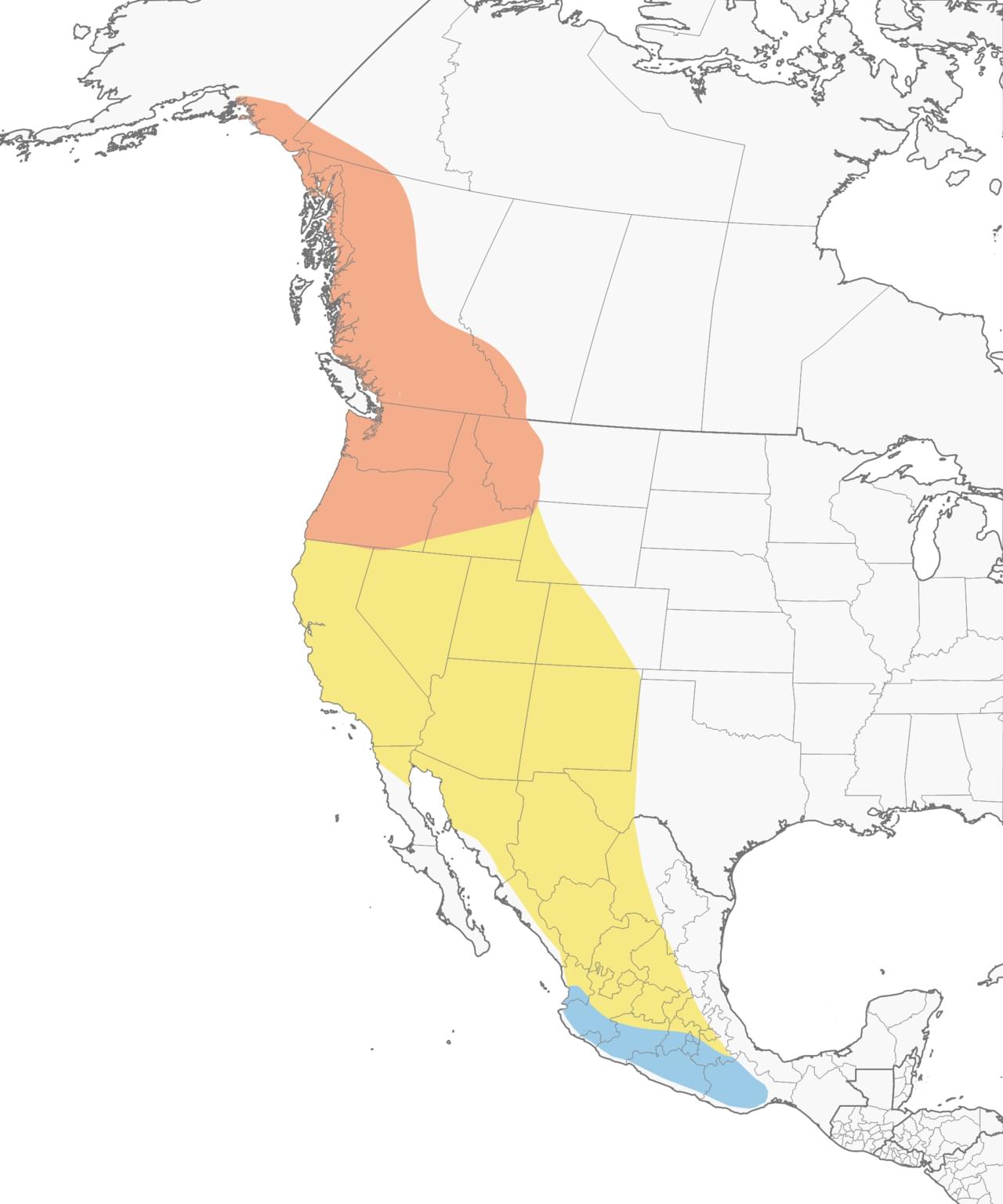
Habitat
Rufous Hummingbirds typically breed in open or shrubby areas, forest openings, yards, and parks, and sometimes in forests, thickets, swamps, and meadows from sea level to about 6,000 feet. During their migration, look for Rufous Hummingbirds in mountain meadows up to 12,600 feet elevation. In Mexico, wintering Rufous Hummingbirds live in oak, pine, and juniper woods at 7,500 to 10,000 feet elevation, shrubby areas, and thorn forests.
Food
Rufous Hummingbirds feed primarily on nectar from colorful, tubular flowers including columbine, scarlet gilia, penstemon, Indian paintbrush, mints, lilies, fireweeds, larkspurs, currants, and heaths. Rufous Hummingbirds get protein and fat from eating insects, particularly gnats, midges, and flies taken from the air, and aphids taken from plants.
Behavior
Rufous Hummingbirds hover at flowers to sip nectar or fly from one to another in fast, straight lines. When not feeding they perch nearby, then launch themselves after any other hummingbirds that appear. All ages and both sexes are aggressive, even during brief 1-2 week stopovers in the course of migration, at which times they may chase off resident Broad-tailed, Broad-billed, Violet-crowned, and Black-chinned hummingbirds. Males may chase off females from feeders even during the breeding season. You may see Rufous Hummingbirds picking insects out of the air, out of spider webs, or from leaves or bark. When agitated, they fan their tails and chip, and males flash their iridescent throat patches. Males perform a steep oval or J-shaped courtship flight when a female enters their breeding territory. If the female perches, the male may switch to low, horizontal figure-8s.
Nesting
The female builds the nest alone using soft plant down held together with spider web. She decorates (or camouflages) the outside with lichen, moss, and bark. Finished nests are about 2 inches across on the outside, with an inner cup width of about an inch. Nests may be reused the following year, not necessarily by the same individual.
Appearance

Typical Sound
© Geoffrey A. Keller | Macaulay Library
Size & Shape
A fairly small hummingbird with a slender, nearly straight bill, a tail that tapers to a point when folded, and fairly short wings that don’t reach the end of the tail when the bird is perched.
Color Pattern
In good light, male Rufous Hummingbirds glow like coals: bright orange on the back and belly, with a vivid iridescent-red throat. Females are green above with rufous-washed flanks, rufous patches in the green tail, and often a spot of orange in the throat.
Behavior
Rufous Hummingbirds have the hummingbird gift for fast, darting flight and pinpoint maneuverability. They are pugnacious birds that tirelessly chase away other hummingbirds, even in places they’re only visiting on migration. Like other hummers, they eat insects as well as nectar, taking them from spider webs or catching them in midair.
Habitat
Rufous Hummingbirds breed in open areas, yards, parks, and forests up to treeline. On migration they pass through mountain meadows as high as 12,600 feet where nectar-rich, tubular flowers are blooming. Winter habitat in Mexico includes shrubby openings and oak-pine forests at middle to high elevation.
Plumage Photos
Similar Species
Male Allen's Hummingbirds have a green back and rump. Rarely, male Rufous Hummingbirds show a green back, so look closely. If you see any completely rufous feathers (not just rufous-edged) on the back, it is a Rufous Hummingbird. Female and juvenile Rufous and Allen's hummingbirds are nearly indistinguishable in the field - it's probably better not to try to identify them during migration, when their ranges overlap considerably. In Allen's Hummingbirds, the outermost tail feather is narrower than the other tail feathers. Among other female hummingbirds, Broad-tailed Hummingbirds have paler buffy sides, lack rufous in the rump, and have little rufous in the tail. Calliope Hummingbirds have only a little rufous in the tail, lack rufous on the rump, and are smaller than Rufous Hummingbirds. Ruby-throated Hummingbirds are grayish on the flanks rather than orange.
- The Rufous Hummingbird is a common visitor to hummingbird feeders. It is extremely territorial at all times of year, attacking any visiting hummingbird, including much larger species. They’ve been seen chasing chipmunks away from their nests.
- The Rufous Hummingbird makes one of the longest migratory journeys of any bird in the world, as measured by body size. At just over 3 inches long, its roughly 3,900-mile movement (one-way) from Alaska to Mexico is equivalent to 78,470,000 body lengths. In comparison, the 13-inch-long Arctic Tern's one-way flight of about 11,185 mi is only 51,430,000 body lengths. (AAB)
- During their long migrations, Rufous Hummingbirds make a clockwise circuit of western North America each year. They move up the Pacific Coast in late winter and spring, reaching Washington and British Columbia by May. As early as July they may start south again, traveling down the chain of the Rocky Mountains. People first realized this pattern after examining detailed field notes and specimens, noting the birds’ characteristic dates of arrival on each part of the circuit.
- The Rufous Hummingbird has an excellent memory for location, no doubt helping it find flowers from day to day, or even year to year. Some birds have been seen returning from migration and investigating where a feeder had been the previous year, even though it had since been moved.
- The Rufous Hummingbird breeds as far north as southeastern Alaska – the northernmost breeding range of any hummingbird in the world. Of the western hummingbirds that occasionally show up in the east, the Rufous Hummingbird is the most frequent.
- Rufous Hummingbirds, like most other hummingbirds, beat their wings extremely fast to be able to hover in place. The wingbeat frequency of Rufous Hummingbirds has been recorded at 52–62 wingbeats per second.
- The Rufous Hummingbird is not a colonially nesting species; however, there have been reports from Washington state that have 20 or more Rufous Hummingbird nests only a few yards apart in the same tree. (From the BNA)
- Hummingbirds are hard to catch, but there are records of Rufous Hummingbirds being caught by a large flycatcher (Brown-crested Flycatcher) and by a frog.
- The oldest recorded Rufous Hummingbird was 8 years 11 months old.
